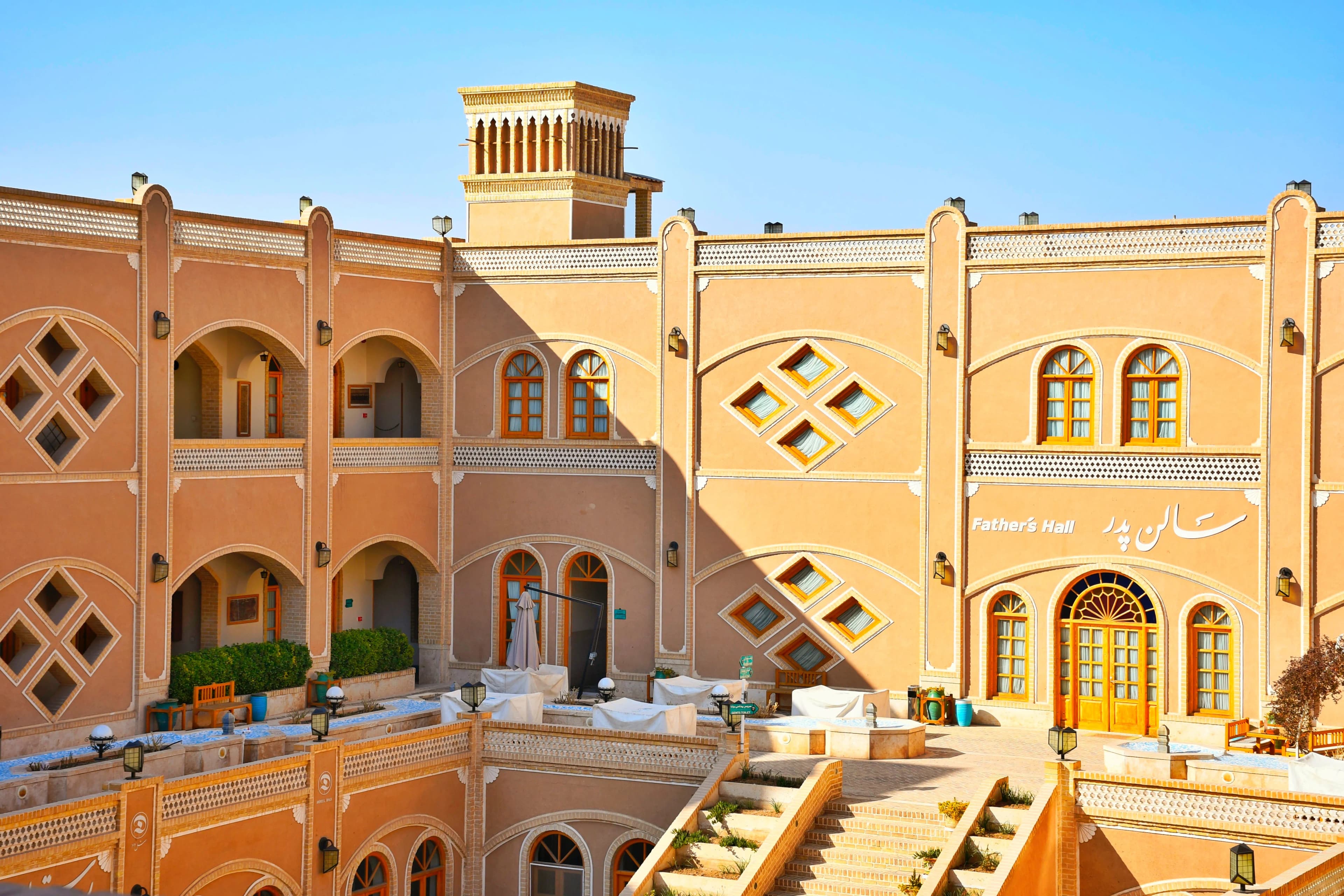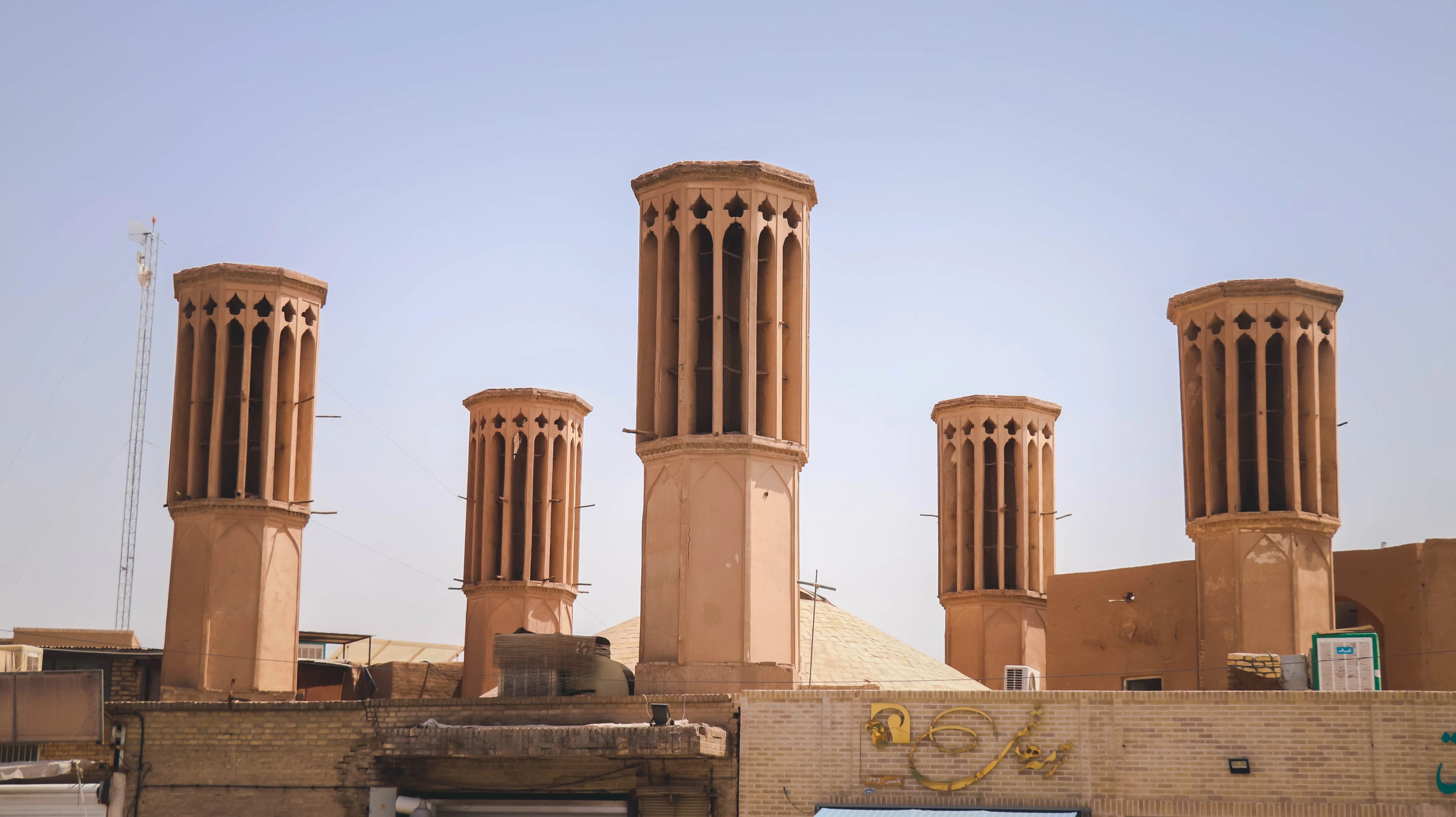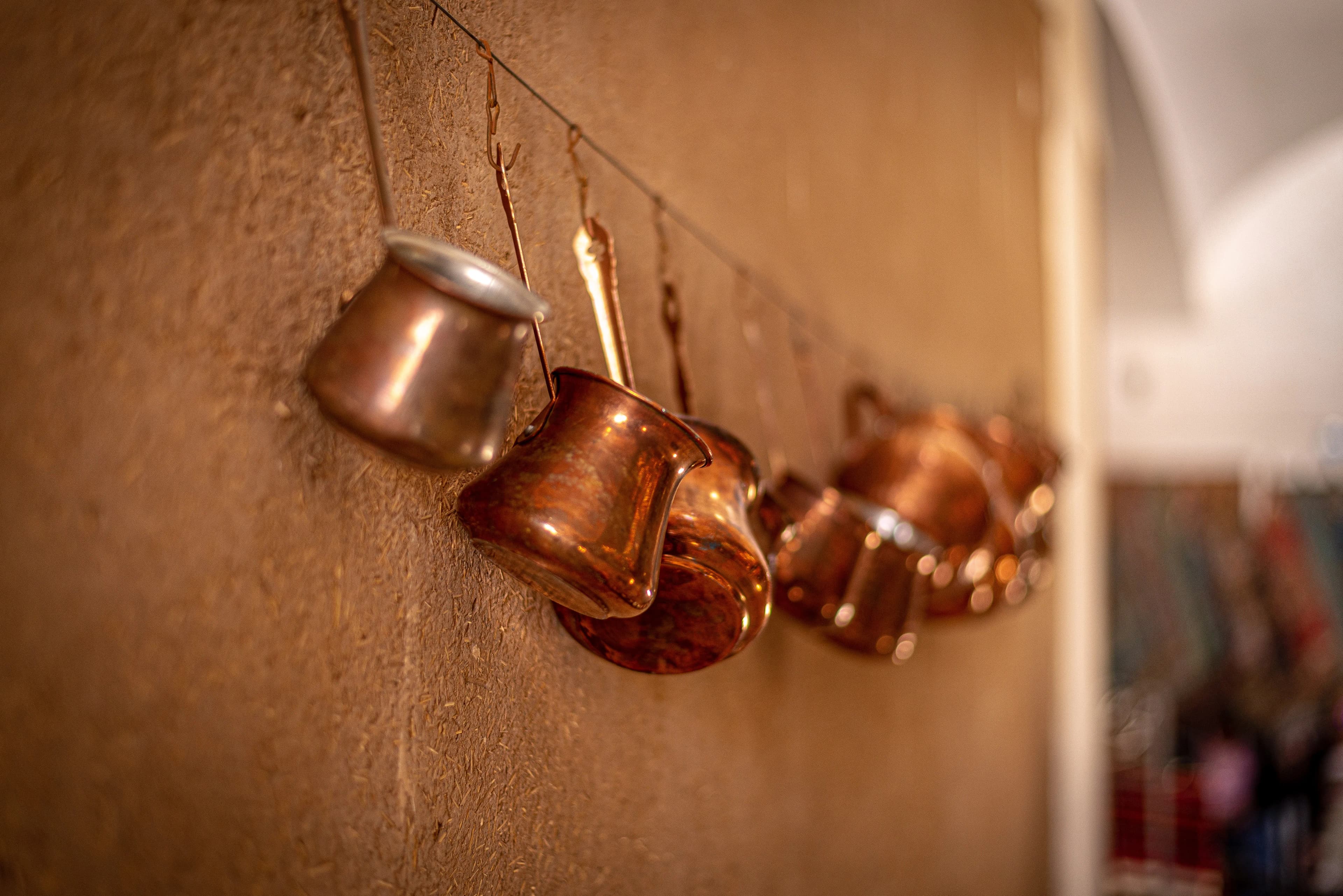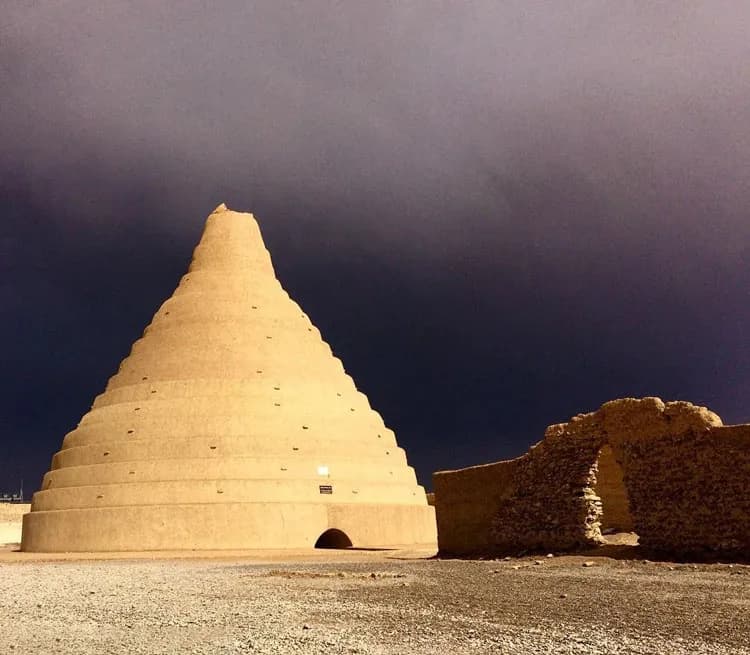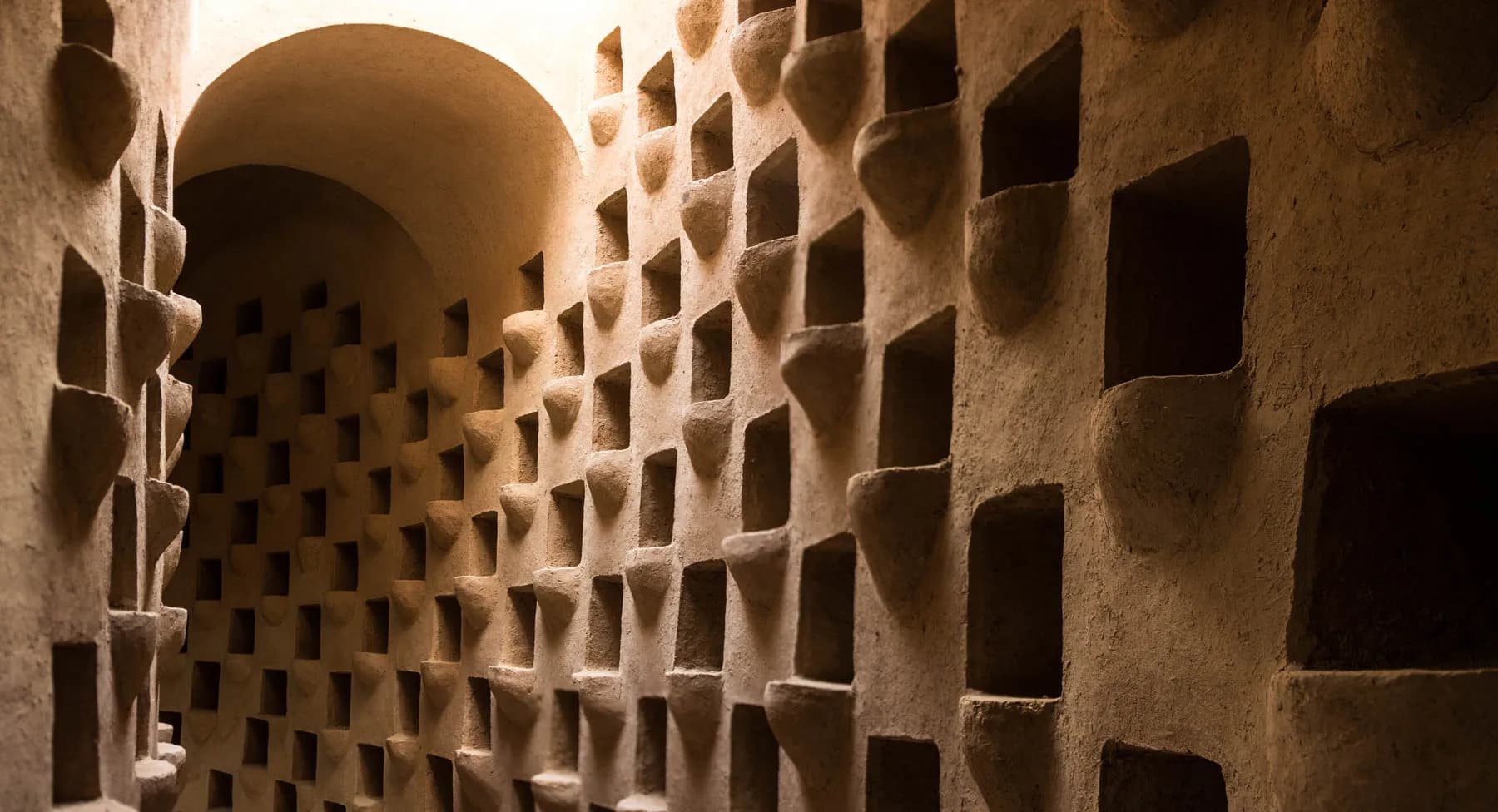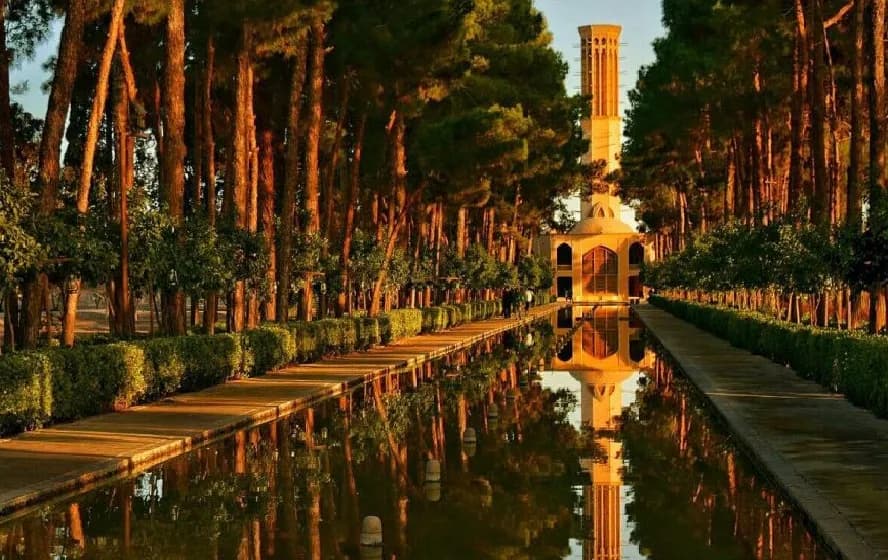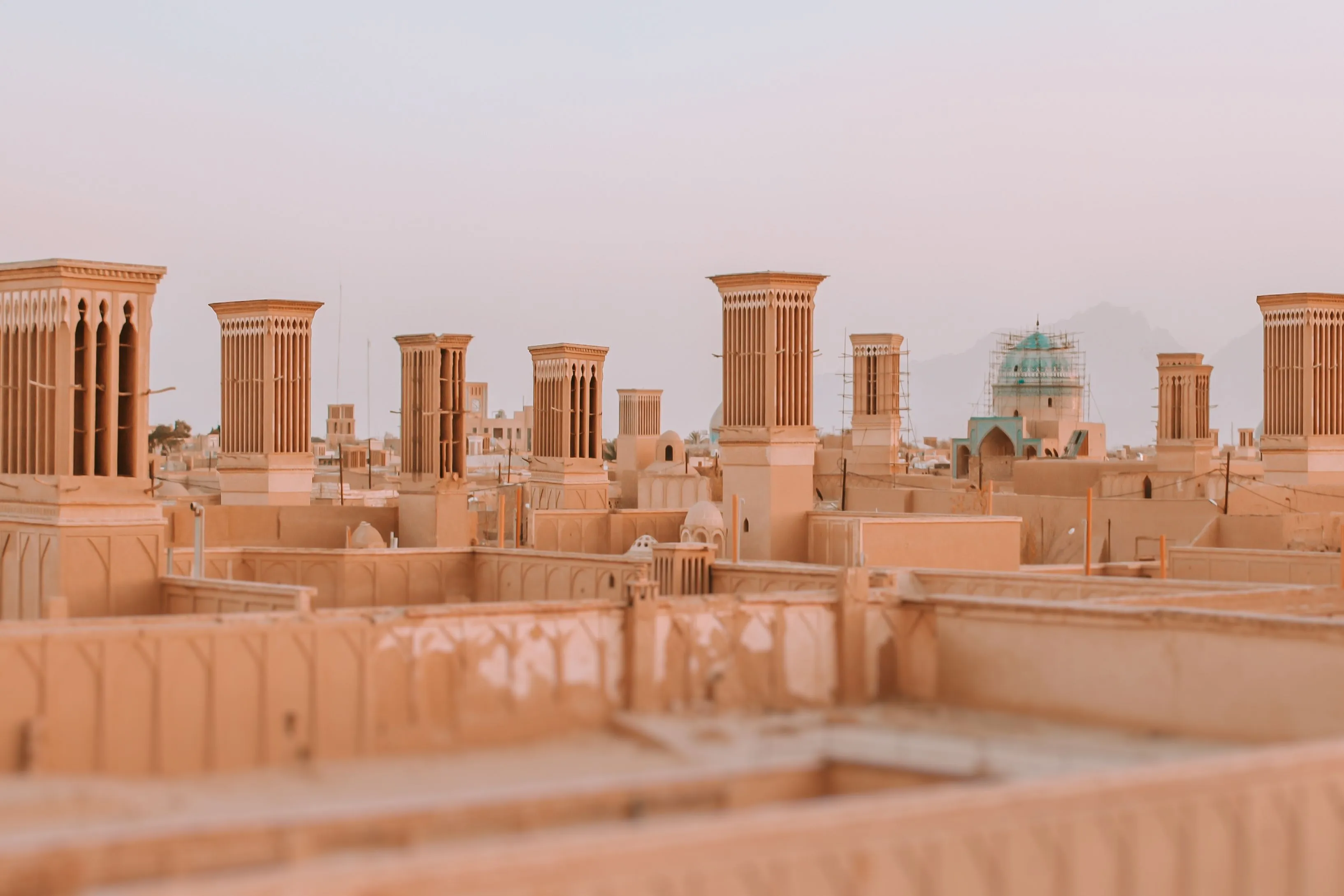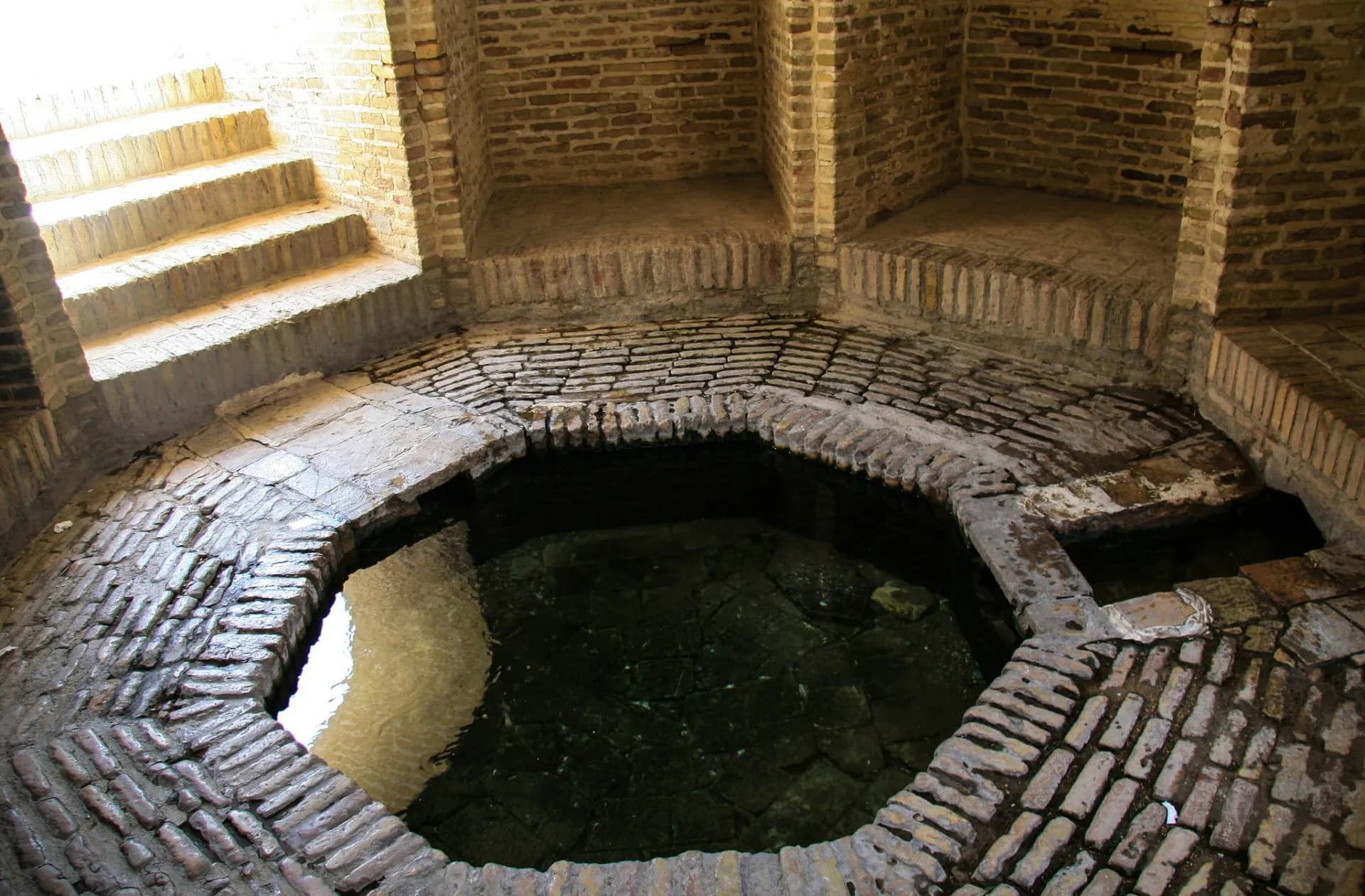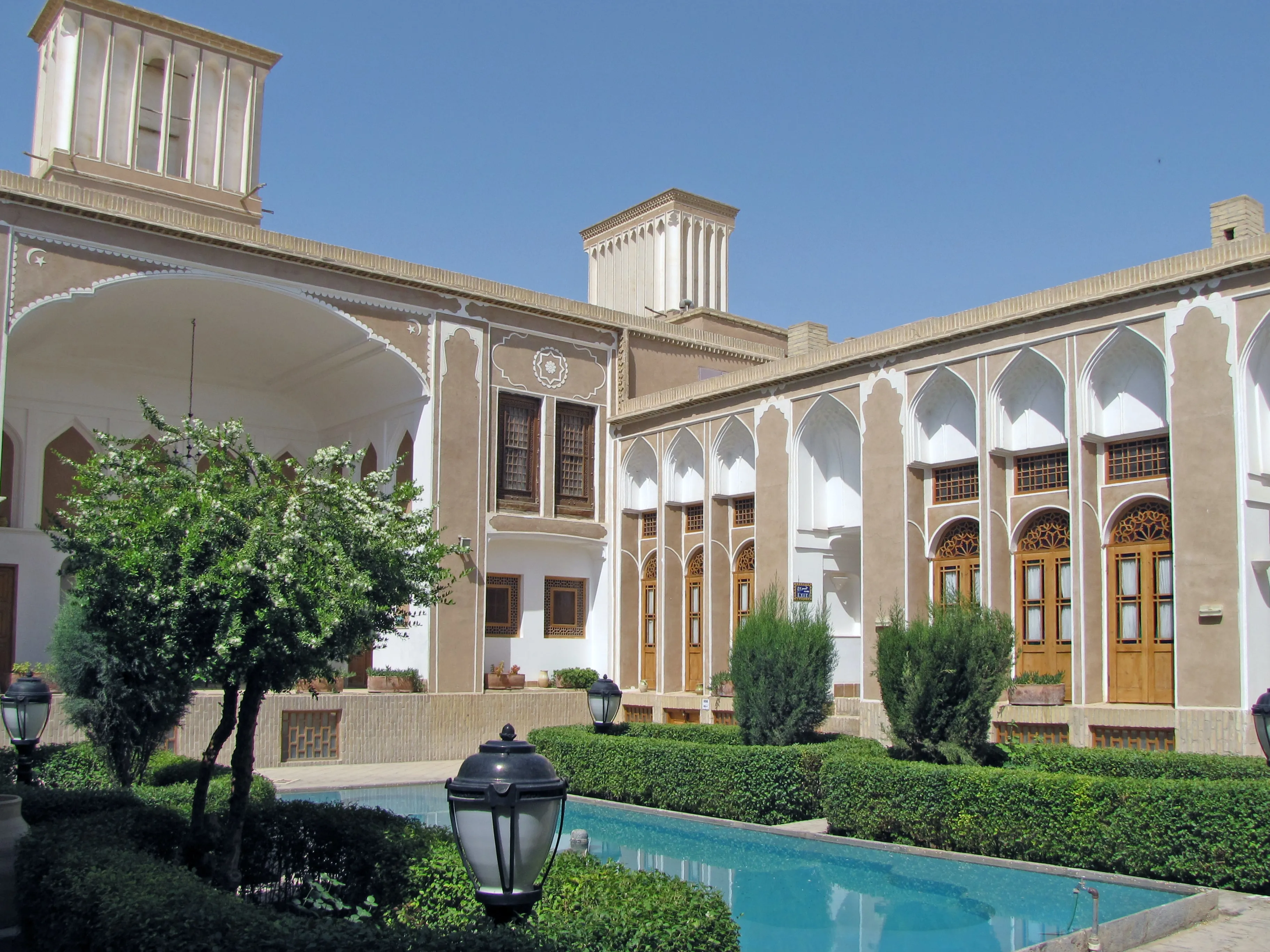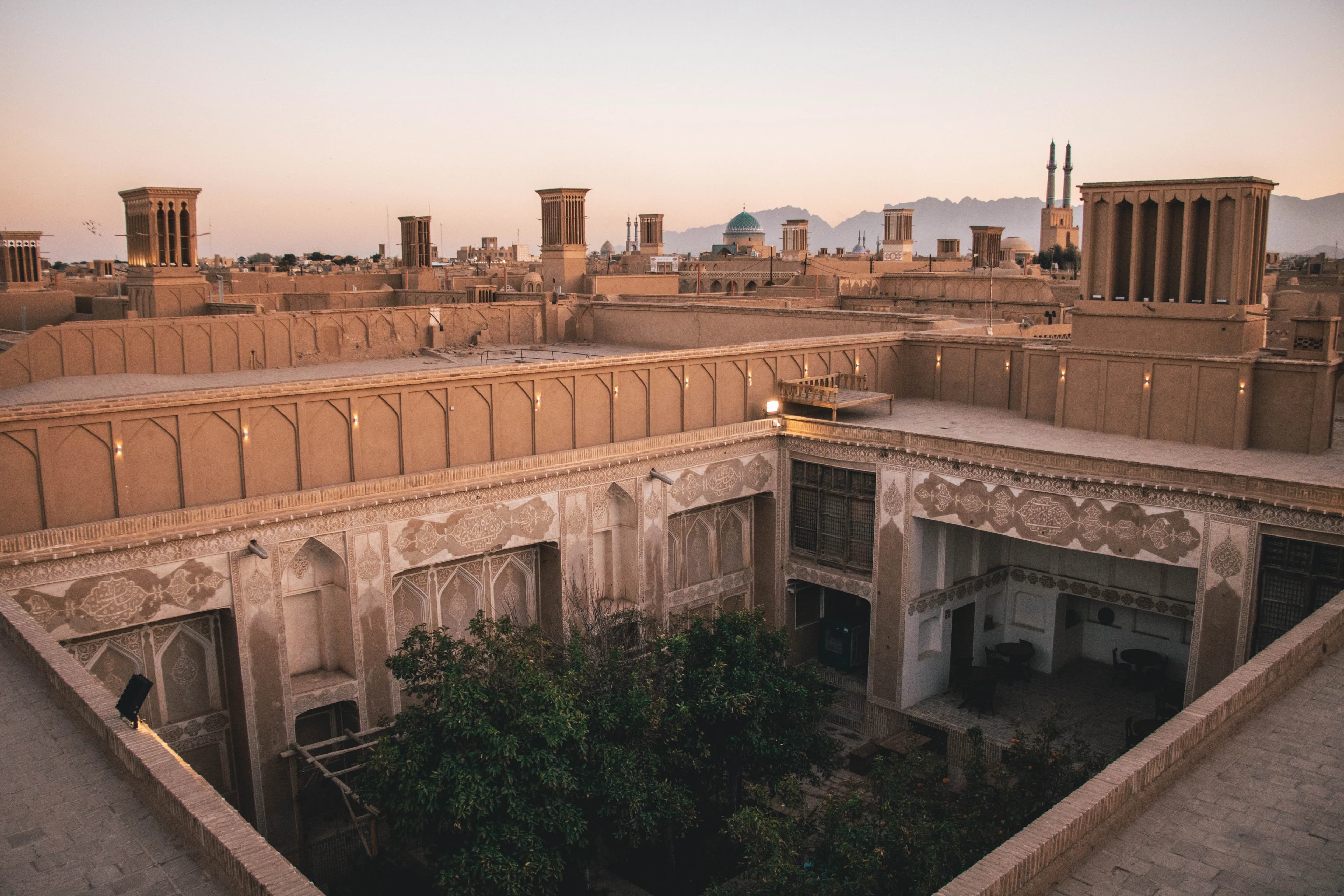Yazd: The most picturesque desert city
The historical city of Yazddates back several thousand years and is considered the most extensive, most original historical area of Iran and the second-largest residential adobe area in the world. Yazd is famous for having kind people, ancient culture, and delicious food. Yazd manifests in the desert and is most famous for its badgir (windcatchers), in a place to experience ancient Zoroastrianism and modern-day Islam co-existing.
It’s best to visit Yazd in the winter since the summer sun is rather unforgiving outdoors. Zurkhaneh, an ancient Persian gym, is a must-visit in Yazd, which is one of the few places in the country where women can also attend this UNESCO intangible cultural heritage. The old city of Yazd is almost completely made of sun-dried clay that ensures a pleasant coolness inside the houses and a light brown skyline from the outside that is dominated by the Badgirs, ancient wind towers rising from almost every roof in the desert sky.
The Mud City of Yazd is one of the oldest cities in Iran, as UNESCO claims, Yazd would be the “oldest adobe city in the world”. There is also Ateshkadeh Fire Temple, the imposing Zoroastrian Towers of Silence just outside the city center worth a visit. However, the best thing to do in Yazd is strolling along the winding streets of the old town, where one feels a little bit like on an alien planet.
About the Climate of Yazd
Yazd has sweltering, arid, and clear summers, and the winters are cold, dry, and mostly clear. The average temperature is from 33°F to 102°F and is rarely below 26°F or above 108°F. The best time to visit Yazd is in the winter when the weather is bearable and you can enjoy everything the city has to offer.
